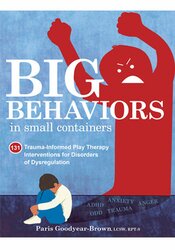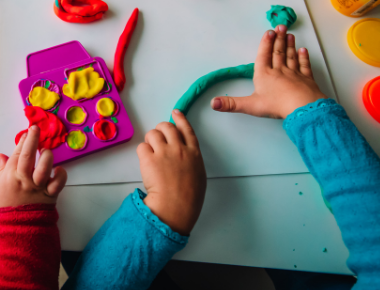Excavating Hard Things
Free trauma-informed play therapy intervention

After these scary experiences, a vacuum of silence often remains. Caregivers are unavailable or so steeped in their own shame or other big emotions that they do not provide structured stories to their children. These children need interventions that help bring the hard story in the room and that build a coherent narrative.
In the TraumaPlay model, therapists do so by assuming the role of Storykeeper, in which they look at the current big behavior and trace it back to its earliest origins and then help the client make sense of how the two are connected.
For example, consider the case of Billy, a four-year-old boy who was adopted domestically at birth. Billy was born addicted to methamphetamines. The nurses and doctors who took care of him in those early days reported that Billy experienced the worst case of withdrawal they had ever seen. He was on the highest doses of morphine allowed and continued to seize, cry inconsolably, shake, pass out, and vomit.
Billyãs adoptive mother, who was there from birth, spoke of holding him and rocking him but being unable to soothe him. Now, at four years old, this little one is avoidant and unable to ask for what he needs. Instead, he makes demands and begins to tantrum when his parents try to take care of his hurts. Billy is in need of a story.
The continuing growth for therapists who work as Storykeepers is to figure out how much truth to tell and how to share that truth in a way that brings context and understanding to the big behaviors in developmentally sensitive terms.
However, in systems where intergenerational trauma is at play, or in systems where caregivers may have intense emotional responses to holding hard pieces of the childãs story, caregivers may need support from the therapist in collateral sessions prior to being in the room with the child for trauma narrative work. In these instances, the therapist can deliver parts of the trauma narrative to the caregiver so the therapist can hold the brunt of the caregiverãs big emotion, stretch the caregiverãs containment ability, and role-play the response that the caregiver will have in the dyadic session with the child.
Sometimes children have the factual account of a storyãthe logical, linear, linguistic narrativeãbut the story doesnãt integrate the affectual components (feelings), the cognitive components (thoughts), or the somatic components (body-based experiences) of the scary thing that happened.
When trauma has happened pre-linguistically, children may have the body-based experiences stored as implicit memories with no conscious sense of remembering, and they may need help identifying the source of these bodily reactions. When a child is experiencing the intrusive or avoidance symptoms of PTSD, building a coherent narrative becomes even more important.
Try this intervention to help playfully structure storytelling when it is needed.
Download a free copy of the from my new book: .

From tantrums and defiance to self-injury and withdrawal, even the most skilled professionals find themselves focused on extinguishing the troubling behavior rather than stepping back to ask: What is the underlying emotional need?
In Big Behaviors in Small Containers, youãll find 131 practical, fun, and ready-to-use play therapy interventions that shift the paradigm around problematic behaviors to allow for therapeutic growth and healing. Based on TraumaPlayôÛ, a treatment approach that prioritizes attachment, co-regulation, and the science of the stress response system, the interventions inside will help kids:
- Develop a sense of safety and security
- Expand their window of tolerance
- Cope adaptively with anger, anxiety, and other strong emotions
- Enhance their emotional literacy
- Strengthen social skills and self-esteem
- Challenge and overcome unhelpful thoughts
- Develop a coherent narrative around trauma and other difficult experiences
- And more!
Whether youãre a therapist, teacher, doctor, caregiver, or trusted grown-up in a childãs life, the tools inside will allow you to become the co-regulating, nurturing, and consistent presence that your ãsmall containerã needs to remain grounded in the face of stress, big feelings, and difficult situations.
Learn more about their educational products, including upcoming live seminars, by clicking here.
Topic: Children & Adolescents | Play Therapy | Trauma
Tags: Activity | Children | Strategies | Success | Therapeutic Arts | Therapy Tools | Tools | Trauma | Video



